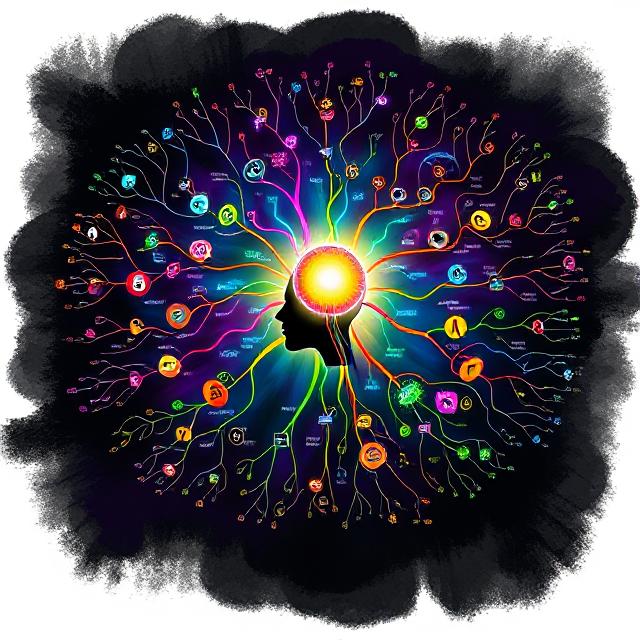
Table of Contents
Mind Maps + Syntopic Revision: How to Learn Faster
In a world flooded with disconnected facts, we need tools that bring clarity, integration, and insight. That’s where mind maps and syntopic revision come in—a powerful duo that activates memory, strengthens associations, and transforms surface-level studying into real understanding.
Syntopic learning is about seeing across perspectives. Mind maps are about seeing across structure. When used together, they form a visual-synthetic system that turns your revision process into a meaningful, creative practice—far beyond memorization.
Let’s explore how combining mind maps with syntopic revision unlocks faster learning, deeper retention, and more confident recall.
🧠 What Is Syntopic Revision?
Syntopic revision means reviewing ideas across sources, across time, and within context. Instead of rereading one book or revisiting isolated notes, syntopic revision invites you to:
- Review multiple sources on the same topic
- Compare frameworks and definitions
- Highlight contradictions and convergence
- Reinforce schema by linking new and old knowledge
It’s not linear. It’s recursive and integrated—helping your brain strengthen the mental web behind the topic.
🗺 What Is a Mind Map?
A mind map is a visual diagram that starts with a central idea and branches into subtopics, associations, and examples. It mimics the way your brain actually stores memory: through networks, not lists.
Mind maps work because they:
- Use spatial memory and color coding
- Trigger dual coding (visual + verbal)
- Help chunk complex info into manageable parts
- Activate creativity and attention
In short, mind maps make abstract knowledge tangible.
🔗 Why Mind Maps + Syntopic Revision Work So Well Together
1. You’re Building Webs, Not Stacks
Traditional revision often piles facts into mental “stacks” that collapse under pressure. Mind maps and syntopic methods weave ideas into connected webs—making recall easier, especially under stress.
This aligns with schema theory: memory becomes stronger when new information connects to existing frameworks. You’re not just memorizing—you’re nesting ideas where they belong.
2. You Get Visual Feedback on Knowledge Gaps
When you map multiple sources together, gaps and inconsistencies pop out visually. That feedback is powerful. You instantly see:
- Which authors disagree
- Which branches are overloaded or thin
- Where your understanding needs depth
It turns review from passive reading into active, diagnostic thinking.
3. You Strengthen Pattern Recognition
When you draw out ideas from 3–5 sources into one map, your brain does more than summarize—it starts seeing deeper structures:
- Themes that repeat
- Contradictions that invite inquiry
- Missing links that trigger curiosity
This is syntopic learning in action: your brain isn’t just storing info—it’s modeling it.
🛠 How to Combine Mind Maps + Syntopic Revision (Step-by-Step)
Step 1: Choose Your Core Theme
Start with a central topic like:
- Neuroplasticity
- Nutrient absorption
- Stoic ethics
- Sleep and memory
Place this topic in the center of a blank page or mind-mapping tool.
Step 2: Gather 3–5 Sources
Pull from different formats and voices:
- A textbook chapter
- A podcast summary
- A YouTube lecture
- A scientific article
- A contrasting opinion piece
Include perspectives that agree and disagree. This is the syntopic edge.
Step 3: Branch Out Key Concepts
From the center, draw major branches:
- Definitions
- Key mechanisms
- Case studies
- Conflicts and critiques
- Real-world applications
Label each idea with shorthand, symbols, or color codes by source. Add notes in your own words—not copied phrases.
Step 4: Add Syntopic Layers
Now connect:
- Similar ideas across different sources
- Conflicting claims with arrows or color contrast
- Patterns and metaphors
- Questions you still have
You’re not just mapping what was said—you’re mapping how you understand the relationships.
Step 5: Review Weekly Using Mind Map Snapshots
Once built, use your mind map as a syntopic review tool:
- Update it weekly with new insight
- Highlight what you now understand better
- Add real-life examples or mnemonics
- Cover it and try redrawing from memory
This keeps your review active, personalized, and progressively deeper.
✍️ Real-World Example: Syntopic Revision of “Stress Response”
Let’s say you’re studying the stress response.
Sources:
- OpenStax Anatomy & Physiology
- A Huberman Lab episode on cortisol
- A blog post comparing stress in Western vs Eastern philosophy
- Research on adaptogens and HPA axis regulation
Mind Map Branches:
- HPA axis mechanics
- Psychological stress theories
- Herbal interventions
- Long-term vs short-term cortisol effects
- Cultural models of resilience
Syntopic Additions:
- Conflicts in dosing adaptogens
- Philosophy branch: Stoic acceptance vs Buddhist detachment
- Question: How does social environment modulate HPA recovery?
You now have a synthetic map of stress that integrates science, culture, and tools for action.
🧭 Tips for Staying Syntopic with Mind Maps
- Keep maps editable: You’ll revise as insight grows.
- Use iconography: Add lightbulbs for “aha” moments, question marks for uncertainty.
- Print and pin: Place on your wall for ambient recall.
- Do map-to-essay drills: Convert a mind map into an essay outline to test synthesis.
Final Thought: Make Your Mind Maps a Thinking Partner
When done right, a syntopic mind map isn’t just a tool—it’s a thinking companion. It evolves with you. It mirrors how your brain learns best: nonlinear, interconnected, meaningful.
Syntopic revision helps you remember because it forces you to understand.
Don’t just highlight what someone else said.
Diagram what you now believe.
